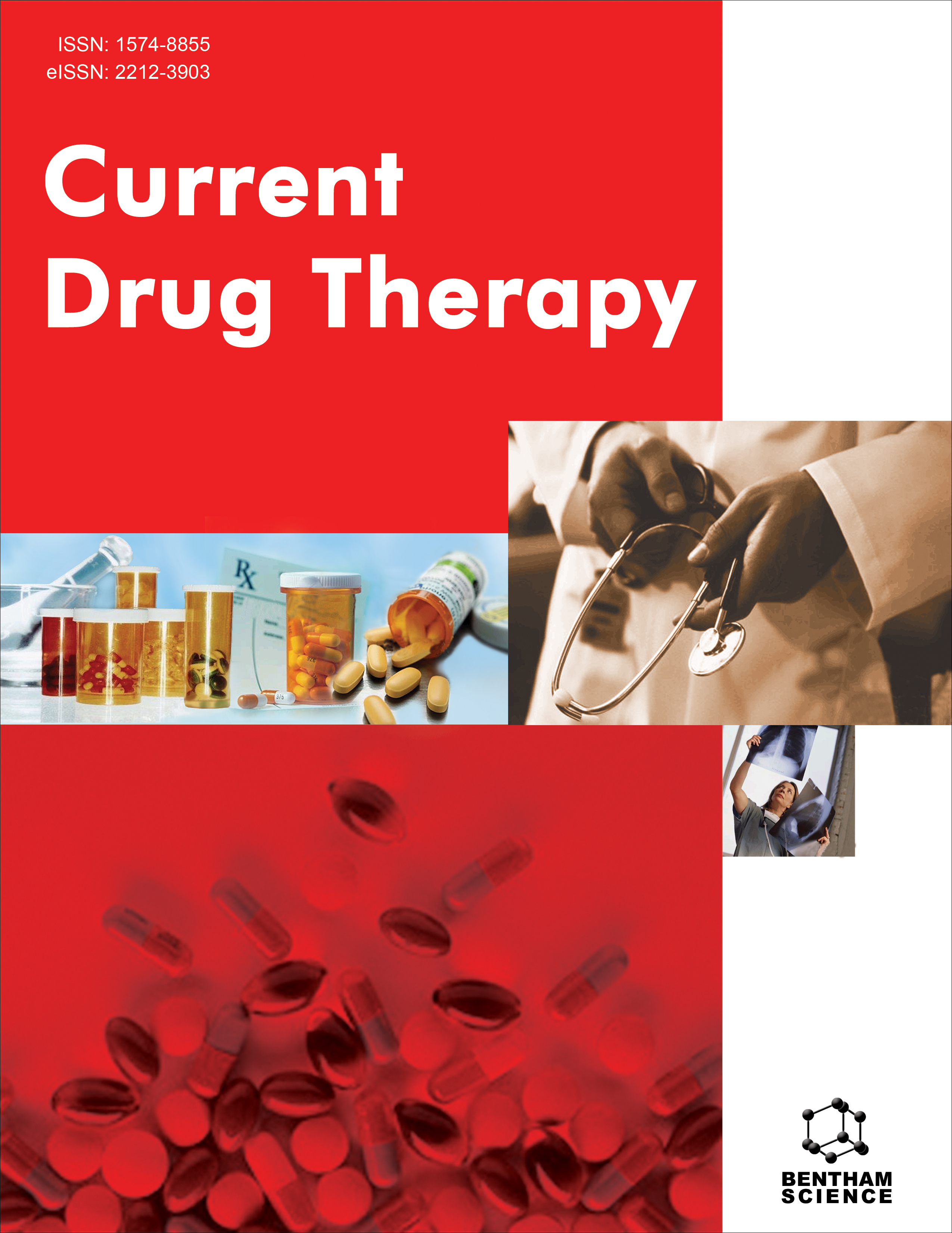- Home
- A-Z Publications
- Current Drug Therapy
- Previous Issues
- Volume 18, Issue 5, 2023
Current Drug Therapy - Volume 18, Issue 5, 2023
Volume 18, Issue 5, 2023
-
-
Miscellaneous Naturally Derived Anticancer Agents
More LessAuthors: Saranya Punniyakotti, Rashmi Saxena Pal, Kanav Khera and Deepti KatiyarSecondary metabolites of natural origin exhibit numerous pharmacological activities, like anti-inflammatory and anti-oxidant effects. Lipid peroxidation has been observed to be prevented by terminating free radical chains and chelating redox active metal ions. These properties of the secondary products can also aid in preventing carcinoma. Many traditional and emerging plants are blessed with plenty of unexplored p Read More
-
-
-
A Review of the Most Important Antiparasitic Compounds Effective on Human Fascioliasis from the Past Until Now
More LessBackground: Fascioliasis is a worldwide parasitic infection caused by a food-borne trematode called Fasciola, and Fasciola infection has been reported in more than 80 countries. Recently, the WHO has presented a roadmap for overlooked diseases from 2021 to 2030, which aims to increase the prevention and control of overlooked different diseases such as Fascioliasis. Methods: Our main objective was to conduct a Read More
-
-
-
Potential of Herbal Extracts as Sunscreens and Antihyperpigmentation Treatment
More LessAuthors: Lata Kothapalli, Komal Bhosale, Asha Thomas and Pooja SawantBackground: Skin pigmentation is one of the most serious problems in the adult population of all races. The underlying factors of skin pigmentation are excessive exposure to UV radiation, oxidative stress, and other provocative causes that cause melasma, black spots, and post-inflammatory hyperpigmentation. Hence, treating hyperpigmentation disorders is challenging. Objective: Skin pigmentation occurs as a process of mel Read More
-
-
-
Green Synthesis, Characterization, and Biomedical Applications of Copper and Copper Oxide Nanoparticles of Plant Origin
More LessAuthors: Sarika Dhir, Ravinder Verma, Shailendra Bhatt, Vandana Garg and Rohit DuttThe green synthesis approach using plants for the formation of metal/metal oxide nanoparticles is biologically safe and environment-friendly as compared to various physical and chemical methods. Various phytoconstituents present in the plants, such as phenols, flavonoids, alkaloids, tannins, and proteins, act as potential bioresources for the formation of metal/metal oxide nanoparticles. The most common metals/met Read More
-
-
-
The Effect of Beta-lactoglobulin Nanocapsules Containing Astaxanthin and 5-fluorouracil on the Antioxidant Enzymes Activity of Superoxide Dismutase, Catalase and Glutathione Peroxidase in HCT116 Colorectal Cancer Cell Line
More LessBackground: The use of nanoparticle drug delivery systems to enhance the therapeutic efficacy and reduce the side effects of anticancer drugs is taken into consideration. Astaxanthin (ATX) is a natural xanthophyll carotenoid with antioxidant, anti-inflammatory, and antiapoptotic properties used to prevent and treat some cancers. Objectives: In the present study, the antioxidant effect of beta-lactoglobulin (β-LG) nanocapsul Read More
-
-
-
Neuroprotective Effect of Levetiracetam in Combination with Berberine on Scopolamine Induced-Cognitive Impairment in Mice: A Behavioral and Biochemical Approach
More LessBackground: Presently, only four drugs have been approved by FDA for Alzheimer’s disease (AD). A drug repurposing approach can be fruitful in searching for promising candidates for AD. Objective: The objective of the work was to evaluate the neuroprotective effect of levetiracetam (LEV) in combination with berberine (BER) in scopolamine-induced cognitive impairment in mice by applying a drug repositioning approach ow Read More
-
-
-
Development and Characterization of Febuxostat Loaded Floating Beads as Gastro-retentive Drug Delivery System in the Treatment of Gout: A Statistical Approach
More LessAuthors: Ravina Kathota, Chetna Modi, Vaishali Thakkar, Hardik Rana and Ayushi PatelBackground: Febuxostat is a BCS class-II drug, used in the treatment of gout. However, because of its lower solubility, a higher and more frequent dose of the drug is required in the treatment. Objective: The objective of this research was to develop and evaluate febuxostat-loaded floating beads as a gastro-retentive drug delivery system (GRDDS) to target drug release up to 24hr in order to enhance bioavailability. Methodol Read More
-
Volumes & issues
-
Volume 20 (2025)
-
Volume 19 (2024)
-
Volume 18 (2023)
-
Volume 17 (2022)
-
Volume 16 (2021)
-
Volume 15 (2020)
-
Volume 14 (2019)
-
Volume 13 (2018)
-
Volume 12 (2017)
-
Volume 11 (2016)
-
Volume 10 (2015)
-
Volume 9 (2014)
-
Volume 8 (2013)
-
Volume 7 (2012)
-
Volume 6 (2011)
-
Volume 5 (2010)
-
Volume 4 (2009)
-
Volume 3 (2008)
-
Volume 2 (2007)
-
Volume 1 (2006)
Most Read This Month
Article
content/journals/cdth
Journal
10
5
false
en


